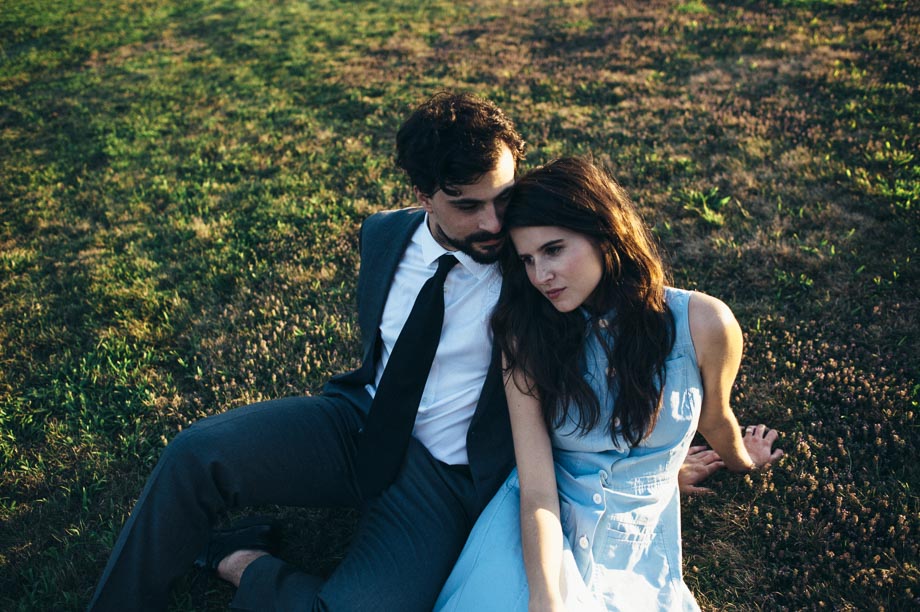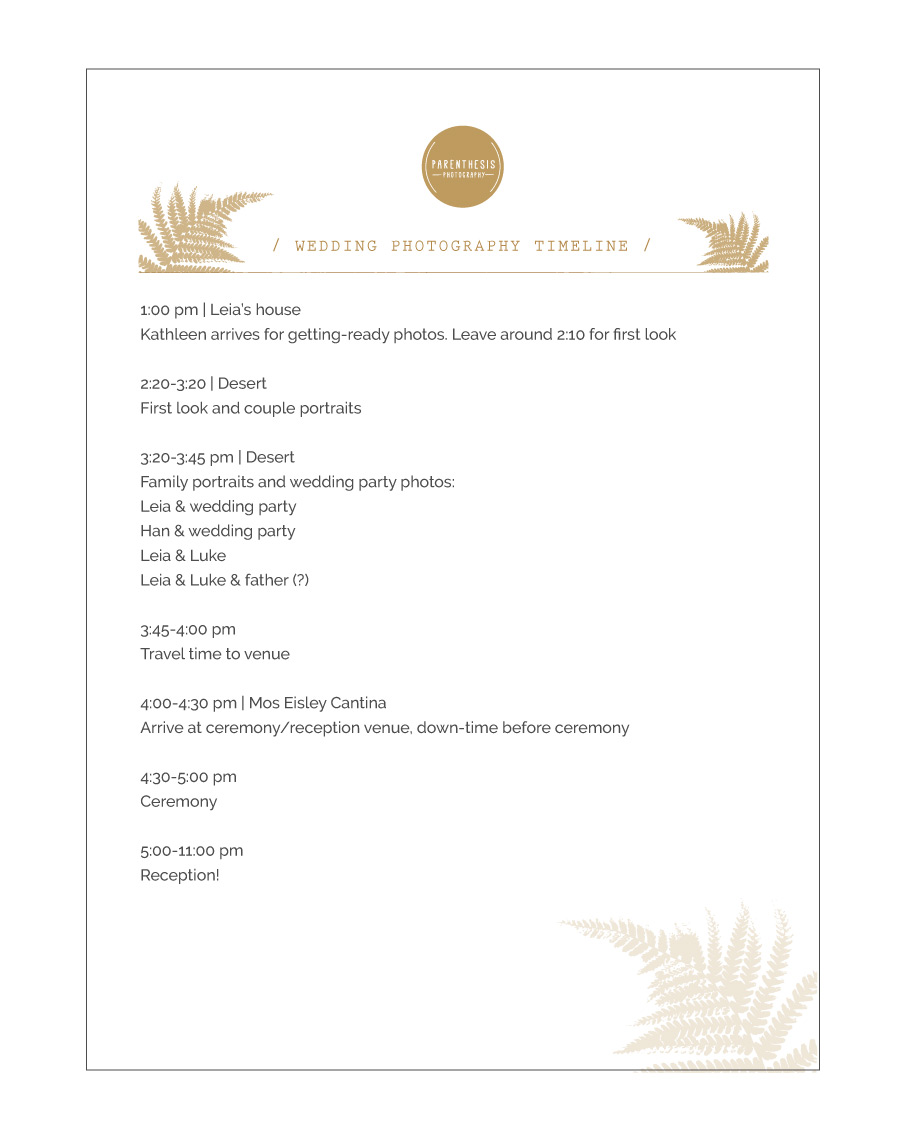 One of the first questions I get asked when talking with a new couple is, inevitably: “how many hours of wedding photography coverage do I need?”
One of the first questions I get asked when talking with a new couple is, inevitably: “how many hours of wedding photography coverage do I need?”
Like so many things in life (getting deep here), there’s no correct answer. The number of hours you’ll want is going to be completely dependent on your wedding, and what’s most important to you.
A few things to keep in mind when choosing the amount of coverage for your wedding photography:
Do you want getting-ready photos?
Are you doing a first look, or portraits after the ceremony?
Are you doing family portraits before or after the ceremony?
What time is your ceremony?
How long is your reception?
How far apart are your various locations for the day?
The big thing to remember – things very very rarely run ahead of schedule or even on schedule. It’s always good to plan for an extra hour or so, especially in the getting-ready portion of the day.
I remember thinking the timeline was this terrifying puzzle while I was wedding planning, but it’s really not all that difficult to figure out. All you have to do is work backwards, and use the events with a definite start time (usually your ceremony) as an anchor.
Say your ceremony starts at 4:30. We know that you have to be there before that, so any photos taken prior have to be finished in time so that you can be at the venue at 4:00 (I always include a half-hour of down-time so that you can get relaxed & in place). Let’s assume we’re 15 minutes away from your venue. That means we should be wrapping up any portraits and leaving to get to the ceremony venue at 3:45 at the latest.
To put your mind at ease, below is a sample timeline for 10 hours of photography coverage, with a first-look:

You can see that 10 hours gives us a nice amount of time for getting-ready photos, couple portraits, family portraits and the whole reception. The minimum coverage I offer is 7 hours (unless you’re eloping, in which case you can get away with fewer). With 7 hours, you usually have to compromise a bit and either cut some time off the end of the reception, or forgo the getting-ready or first look photos. If you’re going with 7 hours, unless you’re having an epic sendoff at the end of the night, I usually suggest starting coverage earlier in the day and not having the last hour/hour and a half of the reception captured.
If you’re going with 7 or 8 hours, I suggest making sure that the things most important to you (first dance, cake cutting, whatever) are in the first part of the reception, so I’m there to capture them. My biggest tip – try to keep your getting-ready, first-look, ceremony, and reception locations in close proximity. You’ll spend more time relaxing and getting great photos, and less time traveling.
One thing I always work into your timeline is buffer. If I’m your photographer, you’ll hear me talking about this a lot. Buffer time is what’s going to keep you sane. It’s what’s going to allow us to relax and ease into portraits without feeling like there’s a giant stopwatch running. Of course, there are only so many hours in the day so we’re always working against the clock a little, but building in extra time is the best thing you can do for yourself and for your wedding photos. You don’t want to be running from family portraits directly into your ceremony, and you don’t want to tell people to show up at 5:10 for family photos only to find that they’re running behind and they’re going to be arriving closer to 5:30. And your ceremony is at 6:00. That’s why I usually default to telling people to arrive ten to fifteen minutes before we actually need them. As a tip–set aside extra time for hair and makeup. It always takes longer than you think.
So that’s really it. Creating a timeline isn’t a huge deal, and neither is figuring out how much coverage you need. It’s all about what you want captured.

COMMENTS +